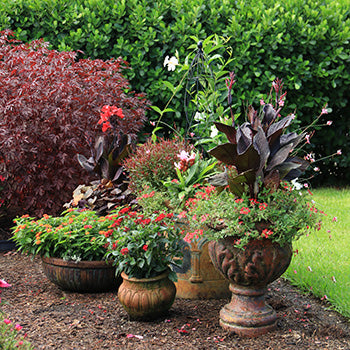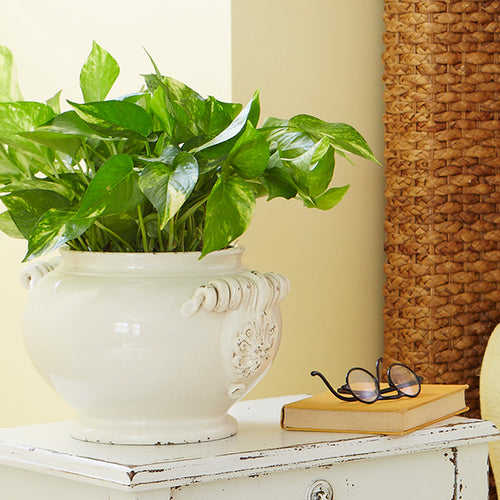By Doug Jimerson
Weeds are like uninvited guests: They arrive early, hog the refreshments, and only leave when pushed out the door. If left unchecked, weeds will move right into your garden, take over, and even threaten your flowers. But here are four failsafe methods to keep unwanted weeds from crashing (and ruining!) your garden party.

Post-emergent herbicides, such as glyphosate, are sprayed on existing weeds and absorbed by the foliage, eventually killing the plants. These products are best used when all other methods of control are exhausted or if you have large impenetrable patches of thistle or poison ivy. Always read the product label carefully before applying and store and dispose of responsibly.
Weeds are like uninvited guests: They arrive early, hog the refreshments, and only leave when pushed out the door. If left unchecked, weeds will move right into your garden, take over, and even threaten your flowers. But here are four failsafe methods to keep unwanted weeds from crashing (and ruining!) your garden party.
1. Remove Weeds By Hand
The most common method of weed control is to pull by hand or to cut them off at the roots with a hoe. Hand weeding is best accomplished when the soil is moist, especially if you need to remove weeds with long taproots such as dandelions. Pull weeds after a good rain or soak the area with your garden hose the night before. After you remove the weeds, bury them in your compost pile. Don’t let them lie on the surface of your garden; they can take root again.
2. Use Tools Made for Weeding
Garden hoes are the nemesis of weeds. There are a variety of hoe styles to choose from. Select one that has a lightweight handle with a strong, super-sharp blade. In my gardens, I use two different types of hoes. For tight spaces I recommend a Dutch Hand hoe with an 18-inch-long handle and razor-blade-like head. It allows you to remove weeds just below the surface of the soil, even in tightly planted beds. For large borders try a long-handled hoe called a Swan Neck. It has a half-moon-shape head and a 74-inch-long handle so you can stand comfortably while working.
3. Mulch (and Smother Weeds)
Mulch offers long-term weed protection. Apply a 4- to 6-inch-deep layer of mulch around your plants to keep weeds at bay. The concept is simple: Mulch shades the soil so weed seeds can’t germinate. Plus, mulch preserves soil moisture to keep your flowers hydrated even during periods of drought. For permanent plantings, such as perennial borders or landscapes, use long-lasting mulch such as shredded bark, wood chips, or pine needles. These materials decay slowly so you’ll only need to reapply every few years. For vegetable or annual flower gardens that are replanted each spring, use mulch that will decompose in one season, such as straw, newspaper, or grass clippings.4. Consider Chemicals
Sometimes, when all other weed-control methods fail, you might consider using chemical controls. These are generally broken down into two categories: pre-emergent and post-emergent. Pre-emergent chemicals are applied in the spring to prevent weed seeds from germinating. Corn gluten meal, for example, is a natural by-product of corn milling that can be used to prevent weed seeds from germinating. Keep in mind that pre-emergent products prevent ALL seeds from germinating, so don’t use them where you plan to grow flowers or vegetables from seed. The key to success with a pre-emergent herbicide is timing. Applying the product too early or too late can minimize results. Read the label closely for the correct timing and application rates.Post-emergent herbicides, such as glyphosate, are sprayed on existing weeds and absorbed by the foliage, eventually killing the plants. These products are best used when all other methods of control are exhausted or if you have large impenetrable patches of thistle or poison ivy. Always read the product label carefully before applying and store and dispose of responsibly.
Get More Tips!
- Easy Perennial Flowers for Shade
- How to Keep Houseplants Alive Over Winter
- How to Make a Butterfly Garden
- How to Make Your Own Planters
- How to Plant Perennials
- Sun-Loving Perennials Anyone Can Grow
- Weed-Smothering Groundcovers for Your Yard

















